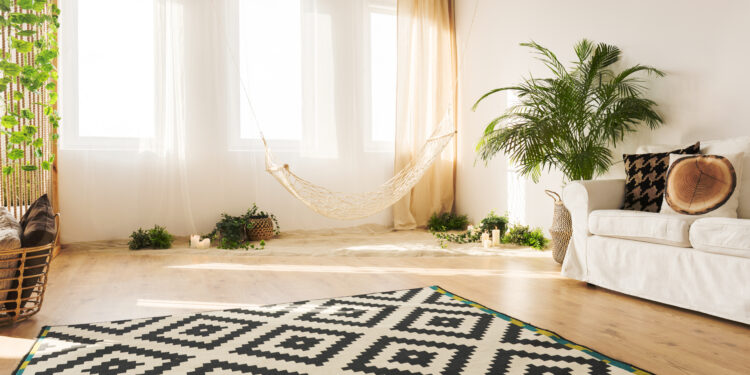Carpet Hiding Summer Allergens? You’re not alone. As the warm months roll on, many UK households unknowingly harbour a range of allergy triggers—right beneath their feet. From fine dust and pollen particles to pet dander and mould spores, your carpet could be quietly collecting more than crumbs and footprints. With autumn just around the corner, now is the ideal time to take action.
This article will explore how carpets trap summer allergens, how they affect your home’s air quality, and the steps you can take to deep clean your carpets before the cooler months set in.
Why Summer Carpets Are a Magnet for Allergens
While carpets bring warmth and comfort to your home, they also act as large filters, absorbing airborne particles and holding onto them long after you’ve forgotten they existed.
Here’s why summer is particularly problematic:
- Windows stay open longer: Warm weather invites ventilation, but also lets in pollen and pollutants.
- Higher foot traffic: Kids, pets, and guests bring in dust, soil, grass, and pollen from outdoors.
- Pet shedding: Cats and dogs tend to shed more in warmer months, and their dander settles quickly into carpet fibres.
- Increased humidity: Summer moisture can encourage mould spores to thrive in carpet padding, especially in poorly ventilated spaces.
Common Summer Allergens Found in Carpets
Understanding what’s lurking in your carpets is the first step toward better indoor air quality. Here are the most common culprits:
- Pollen: Tree, grass, and weed pollen are prevalent during summer and can cling to clothes, shoes, and pet fur.
- Dust and dust mites: Microscopic dust mites feed on dead skin cells and thrive in warm, humid environments, like carpets.
- Pet dander: Flakes of skin and fur from pets can become embedded deep in carpet fibres.
- Mould spores: In damp or humid areas, mould can take hold in carpet padding and subflooring.
- Dirt and soil: Outdoor particles are easily tracked in, especially in high-traffic areas like hallways and lounges.
Signs Your Carpet Might Be Affecting Your Health
While a clean-looking carpet may appear harmless, it can still harbour hidden allergens. If you or your family members experience any of the following, your flooring could be part of the problem:
- Sneezing or itchy eyes indoors
- Persistent cough or throat irritation
- Asthma flare-ups or tightness in the chest
- Eczema or other skin sensitivities
- Unusual musty smells or damp odours
Don’t dismiss these as just “summer colds” — your carpet might be triggering or worsening symptoms without you realising.
Why Autumn Is the Best Time for Carpet Deep Cleaning
Although spring is traditionally associated with deep cleaning, early autumn is a smart time to address allergens, especially after a long summer of accumulation.
Here’s why:
- Before you close your windows for the colder months, remove trapped allergens from carpets to improve indoor air quality.
- Less humidity in autumn makes carpets dry faster after deep cleaning.
- Cleaning now helps prevent dust mite populations from exploding once central heating kicks in.
Simple Daily Habits to Minimise Carpet Allergens
Preventing build-up doesn’t always require major effort. Adopt these everyday habits to keep your carpets fresher and cleaner:
- Remove shoes at the door: This reduces the amount of pollen, soil, and bacteria tracked inside.
- Vacuum regularly with a HEPA filter: A high-efficiency vacuum traps tiny particles instead of blowing them back into the air.
- Groom pets outdoors: Brushing your dog or cat outside can dramatically reduce indoor dander and fur build-up.
- Use doormats: Place mats both outside and inside entrances to capture dirt before it reaches your carpet.
- Maintain indoor humidity below 60%: Use dehumidifiers or proper ventilation to stop mould spores from thriving.
Deep Cleaning Options: What Works Best?
A standard vacuum can only do so much. For deep-rooted allergens, consider one of the following methods:
- Steam Cleaning (Hot Water Extraction)
- Uses high-pressure steam to loosen dirt and allergens
- Kills bacteria, mould spores, and dust mites
- Ideal for homes with pets, asthma sufferers, or young children
2. Dry Carpet Cleaning
- Uses minimal moisture, ideal for quicker drying
- Absorbent compound or foam attracts dirt and is then vacuumed away
- Best for low-pile carpets or delicate fibres
3. Professional Cleaning Services
- Experts use industrial-grade machines for thorough results
- Some services offer eco-friendly, non-toxic solutions
- Recommended at least once a year, or twice in homes with pets or allergy sufferers
4. Natural DIY Solutions
- Baking soda: Sprinkle over carpet, leave for 15 minutes, then vacuum to neutralise odours and absorb moisture.
- White vinegar spray: Mix with water to spot-clean areas where allergens might concentrate.
- Essential oils (e.g. eucalyptus or tea tree): Add a few drops to your homemade cleaner for antibacterial benefits.
When to Replace Your Carpet
In some cases, cleaning might not be enough, especially if your carpet is over 10 years old or has suffered repeated water damage or mould. Signs it might be time to replace:
- Persistent odours despite cleaning
- Visible mould or mildew stains
- Allergic reactions that don’t improve with cleaning
- Matting or fraying that traps more debris
If you’re updating flooring, consider allergy-friendly alternatives like hardwood, vinyl, or low-pile rugs that are easier to keep allergen-free.
Eco-Friendly Carpet Care: Better for You and the Planet

- Choose eco-conscious carpet cleaning products where possible to reduce your environmental impact and protect indoor air quality.
- Look for UK brands offering biodegradable, plant-based, and non-toxic formulas — ideal for households with children or pets.
- Check for labels such as:
- “Low VOC” (volatile organic compounds) – reduces indoor air pollution.
- EU Ecolabel or Cruelty-Free – ensures environmentally responsible production.
- Opt for concentrated or refillable products from brands like Ecover, Bio-D, or Smol to cut down on packaging waste.
- Consider DIY options using white vinegar, bicarbonate of soda, or lemon juice for small spot-cleaning tasks.
- Maintain your carpets regularly:
- Vacuum at least once a week.
- Tackle spills immediately to prevent staining.
- Schedule seasonal deep cleans to extend carpet life.
- Prolonging carpet lifespan reduces landfill waste and the carbon cost of manufacturing new flooring.
- Choose steam cleaning or professional services that advertise eco-friendly or chemical-free methods.
- Avoid overuse of chemical treatments, which can build up over time and diminish both carpet quality and indoor air freshness.
Final Thoughts: A Cleaner Carpet Means Healthier Air
Your carpet might be quietly harbouring a whole season’s worth of allergens — but with a little effort now, you can prevent them from settling in for the colder months.
By deep cleaning your carpets before autumn, you’re not just improving the appearance, you’re also protecting your family’s health and enhancing your home’s air quality. A fresh, allergen-free carpet creates a more comfortable and breathable space as we head into the cosy indoor season.
Need more seasonal home tips? Bookmark thehouseholddaily and check out our latest advice on indoor air quality, pest prevention, and safe cleaning strategies for UK homes.


















